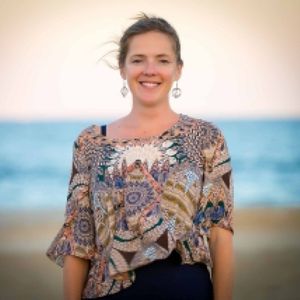Mission
[note to satsangam team: please incorporate changes/comments/additions on this page:
https://docs.google.com/document/d/1Az47lJhkNwEPstFnliMJAV0qK30r4aDXESw7NYKx29E/edit?usp=sharing]
Our collaborative learning community supports transforming knowledge and experience into living wisdom through the contemporary study and application of Vedic knowledge systems for the benefit of all beings.
Vision
[note to satsangam team: please incorporate changes/comments/additions on this page:
https://docs.google.com/document/d/1Az47lJhkNwEPstFnliMJAV0qK30r4aDXESw7NYKx29E/edit?usp=sharing]
We recognize the Vedic perspective that truth belongs to, nourishes and supports positive transformation in all individuals and communities. We aim to orient seekers and students of life to Vedic knowledge systems. The homepage artwork reflects this.
Values
As a group of lifelong students, teachers, and practitioners of Ayurveda and other systems flowing from the vedas, whose lives have all been touched in profound and meaningful ways, we strive to honor the source and essence of this knowledge and maintain its integrity.
Revered 20th century Ayurvedic scholar and physician from Kerala, India, Thirumulpad taught that the integrity of śāstra (teaching) is maintained by adhering to the following four steps:
- adhīti: perusal, study, absorption and recollection of the material
- bodha: gaining and internalizing the knowledge
- ācaraṇa: practicing the medicine and knowledge in our lives and with our patients
- pracaraṇa: teaching the knowledge to others.
We aim to apply these practices ourselves, and to offer content and community to support others to do so.
- We welcome all. “All” includes all races, genders, sexual orientation, ages, religious or non-religious individuals.
- We operate as a horizontal rather than a vertical organization; we aim to be egalitarian rather than hierarchical, working in cooperation rather than competition.
- We aim to bring together academic and clinical students and practitioners.
- We provide financial aid or scholarships to our programs to support equity.
- We tithe at least 10% of all profits to charities or organizations chosen by Satsangam partners.
- We value service as being essential to integration and fructification of knowledge and the realization of other values.
- We strive to recognize the cultural orientation and relationship of Vedic subjects to each other.
- We strive to value and practice a healthy balance between rest and activity, so we are committed to moderation in personal, organizational and professional life, and to supporting members of Satsangam community to also take the time they require for physical, mental, emotional and spiritual health.
- We strive to acknowledge and honor the cultures and traditions from which the Vedic knowledge systems emerged, including the diverse cultures of India, in an ongoing effort to avoid cultural appropriation. For more about this, you can read this article.
Logo
The dragon or damselfly or, vyādha (hunter) pataṃga (winged insect), a version of which is hovering over the saṃgam (confluence) of the Ganga (Ganges) and Yamuna rivers on the Satsangam home page artwork, represents satsangam (confluence of truth or knowledge) because:
- It reflects the application of the 3 Laws of dhātu (tissue) nutrition Ayurveda teaches, to nourishing and transforming human minds, spirits and bodies through education as follows:
- Irrigation (kedāri kulya nyāya): the drop of water falling from the dragonfly’s wing represents the waters of knowledge irrigating humans.
- Selectivity (khale kapota nyāya): dragonflies are famous for their hunting prowess. Similarly, each of us can consider from the vast field of possibilities, our innermost curiosity, and select what might satisfy it.
- Transformation (kṣiradadhi nyāya): Dragon or damselflies naturally transform to ever more refined organisms, through various stages of life, at home in and at ease with all the elements. They begin their lives in the water; the nymphs hatch and molt several times before emerging into their adult forms; a nymph crawls out of the water and perches somewhere on the earth; its exoskeleton splits open and a winged adult emerges, taking to the sky. Over the course of their lives they live in and under the water, outside the water, on land and in the air. We humans can also find ourselves at home in different life stages, transformed by the knowledge and elements we encounter.

- Dragon and damselflies have been around for millions of years and are important components of aquatic ecosystems and are indicators of good water quality. In the same way, the urge for knowledge and potential for transformation has been present in humans as long as we’ve existed.
- They are found on every continent except Antarctica and are found almost anywhere there is freshwater, in lakes, ponds, wetlands, streams, rivers, vernal pools and bogs. In the same way, sincere students of life are found all over the globe, drawn to wherever knowledge exists.
The star above the dragon or damselfly represents the quest for the subtle realms of knowledge and also the starfish–a horizontal being. Starfish have a nervous system that is distributed throughout their whole being such that, if severed, they can each grow their own way. They represent satsangam’s working ideal: we aim to be eusocial–that is operating as a horizontal rather than vertical organization; decentralized and egalitarian rather than hierarchical; resilient; working in cooperation rather than competition.















